A) ![]()
B) ![]()
C) ![]()
D) ![]()
Correct Answer

verified
Correct Answer
verified
Multiple Choice
Determine the intervals of the domain for which the function is increasing, decreasing, and constant.
-![Determine the intervals of the domain for which the function is increasing, decreasing, and constant. - A) Increasing [ 1 , \infty ) ; Decreasing ( - \infty , 1 ] B) Increasing [ - 1 , \infty ) ; Decreasing ( - \infty , - 1 ] C) Increasing ( - \infty , 1 ] ; Decreasing [ 1 , \infty ) D) Increasing ( - \infty , - 1 ] ; Decreasing [ - 1 , \infty )](https://d2lvgg3v3hfg70.cloudfront.net/TB4654/11ecc618_d83c_f1cd_b432_1f6786ec25b2_TB4654_11.jpg)
A) Increasing ; Decreasing
B) Increasing ; Decreasing
C) Increasing ; Decreasing
D) Increasing ; Decreasing
Correct Answer

verified
Correct Answer
verified
Multiple Choice
Evaluate the function. -Find if
A)
B) 3
C) None of these
D) 5
Correct Answer

verified
Correct Answer
verified
Multiple Choice
Graph the function.
-
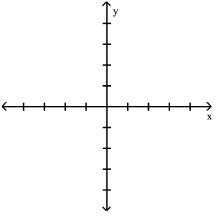
A) ![]()
B) ![]()
C) ![]()
D) ![]()
Correct Answer

verified
Correct Answer
verified
Multiple Choice
Graph the function.
-
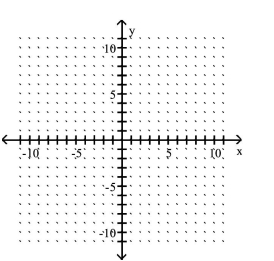
A) ![]()
B) ![]()
C) ![]()
D) ![]()
Correct Answer

verified
Correct Answer
verified
Multiple Choice
For the given functions f and g , find the indicated composition. -
A)
B)
C)
D)
Correct Answer

verified
Correct Answer
verified
Multiple Choice
Graph the linear function and give the domain and the range. If the function is a constant function, identify it as such.
-
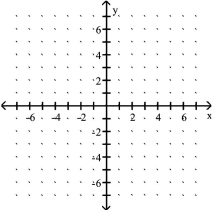
A) ![]()
B) ![]()
C) ![]()
D) ![]()
Correct Answer

verified
Correct Answer
verified
Multiple Choice
Graph the point symmetric to the given point.
-Plot the point (-8, 0) , then plot the point that is symmetric to (-8, 0) with respect to the x-axis. 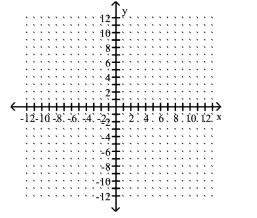
A) ![]()
B) ![]()
C) ![]()
D) ![]()
Correct Answer

verified
Correct Answer
verified
Multiple Choice
Find the center-radius form of the equation of the circle. -center , radius 6
A)
B)
C)
D)
Correct Answer

verified
Correct Answer
verified
Multiple Choice
Graph the function.
-
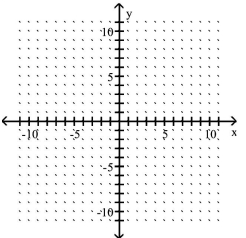
A) ![]()
B) ![]()
C) ![]()
D) ![]()
Correct Answer

verified
Correct Answer
verified
Multiple Choice
Give the domain and range of the relation. -
A) domain: ; range:
B) domain: ; range:
C) domain: ; range:
D) domain: ; range:
Correct Answer

verified
Correct Answer
verified
Multiple Choice
Graph the point symmetric to the given point.
-Plot the point (-4, 5) , then plot the point that is symmetric to (-4, 5) with respect to the y-axis. 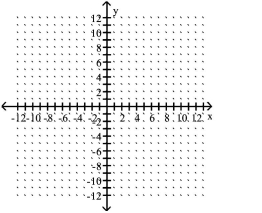
A) ![]()
B) ![]()
C) ![]()
D) ![]()
Correct Answer

verified
Correct Answer
verified
Multiple Choice
Decide whether the relation defines a function.
-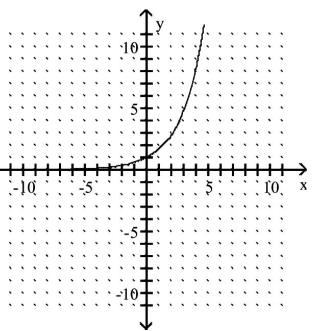
A)
B) Function
Correct Answer

verified
Correct Answer
verified
Multiple Choice
Find the average rate of change illustrated in the graph.
-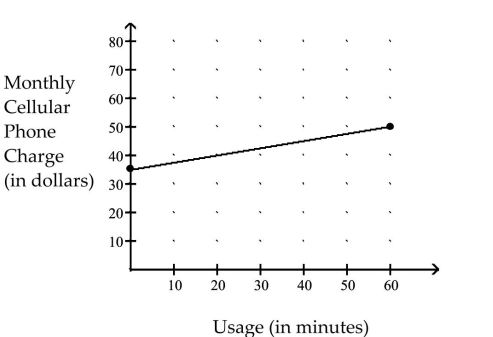
A) per minute
B) per minute
C) per minute
D) per minute
Correct Answer

verified
Correct Answer
verified
Multiple Choice
An equation that defines y as a function of x is given. Solve for y in terms of x, and replace y with the function notation f(x) . -
A)
B)
C)
D)
Correct Answer

verified
Correct Answer
verified
Multiple Choice
Graph the line described.
-through
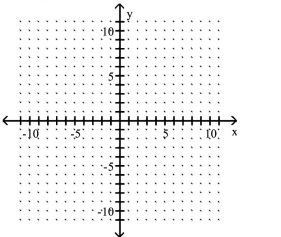
A) ![]()
B) ![]()
C) ![]()
D) ![]()
Correct Answer

verified
Correct Answer
verified
Multiple Choice
Use a graphing calculator to solve the linear equation.
-The graph of is shown in the standard viewing window. Which is the only choice that could possibly be the solution of the equation ?
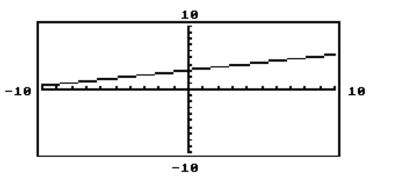
A) 12
B)
C)
D)
Correct Answer

verified
Correct Answer
verified
Multiple Choice
Graph the function.
-

A) ![]()
B) ![]()
C) ![]()
D) ![]()
Correct Answer

verified
Correct Answer
verified
Multiple Choice
Find the slope of the line satisfying the given conditions. -horizontal, through
A) 0
B) -1
C) 1
D) undefined
Correct Answer

verified
Correct Answer
verified
Multiple Choice
Describe how the graph of the equation relates to the graph of y = x2. -
A) a translation 4 units to the left
B) a translation 4 units to the right
C) a translation 4 units down
D) a translation 4 units up
Correct Answer

verified
Correct Answer
verified
Showing 361 - 380 of 525
Related Exams